Did you know that just 48 hours without food can severely impact your cat’s organs and potentially result in life-threatening conditions? As a cat owner, noticing that your beloved pet has stopped eating or seems anorexic is not only alarming—it demands swift action. This comprehensive guide will help you recognize the signs, understand the medical and behavioral causes, and provide actionable solutions to restore your cat’s appetite and protect their feline health.
Startling Feline Health Facts: Understanding Why Is My Cat Not Eating or Anorexic
"Did you know that just 48 hours without food can severely impact your cat’s organs? Swift intervention is critical for feline health." – Dr. Mia Jensen, DVM
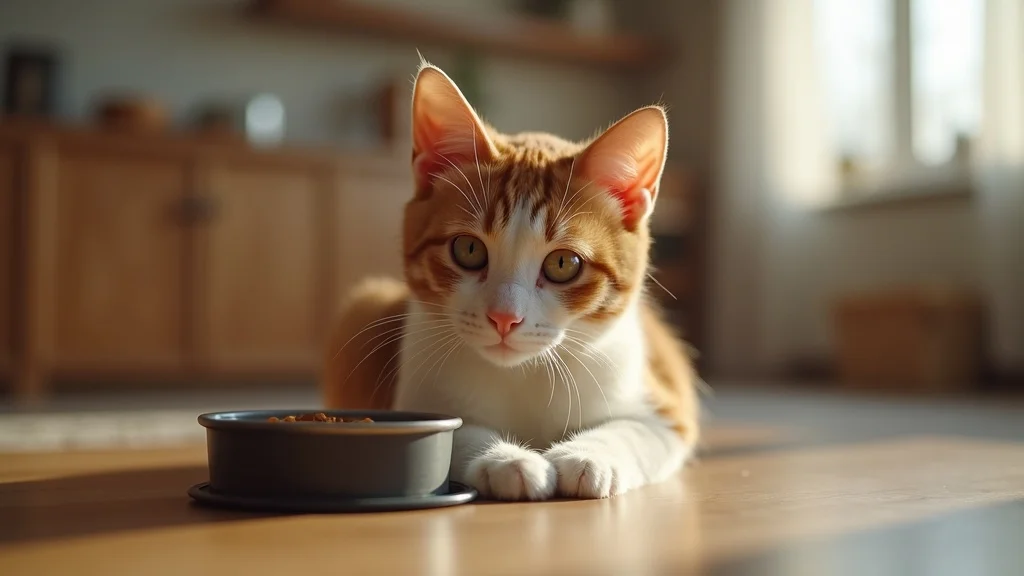
If you have ever asked, "why is my cat not eating or anorexic?" you are not alone. Every year, countless cat owners are faced with this heartbreaking pet health concern. Cats are true creatures of habit—so when your cat is not eating or suddenly shows a decreased food intake, it often signals that something is wrong. Sometimes the cause is simple, like disliking the flavor of cat food, but other times it can be a sign of a serious health issue, such as kidney disease or another medical condition. Early recognition and a proactive response can make all the difference in recovery and long-term wellness.
In this guide, we explain the critical signs of feline anorexia, explore potential causes both medical and behavioral, and share proven solutions for getting your cat to eat again. You’ll also learn when it’s time to seek emergency veterinary help, how to create an environment that encourages healthy eating habits, and which warning signs you should never ignore.
What You'll Learn About Why Is My Cat Not Eating or Anorexic
- Recognize critical signs and causes of feline anorexia
- Discover solutions to encourage your cat to eat
- Understand when non-eating signals a deeper medical condition
- Access advice from veterinary experts on pet health
Why Is My Cat Not Eating or Anorexic: Recognizing the Signs
Pinpointing the reason behind a cat not eating starts with close observation. Decreased food intake in cats is not merely about skipping a meal—it's a clinical sign that your feline health may be at risk. Cat owners should look for sudden changes in food consumption, as well as other subtle behavior cues. Recognizing the symptoms early means you can act before more severe problems develop. The following sections outline common warning signs that your cat has stopped eating and may be suffering from an eating disorder.
Common Symptoms When a Cat Is Not Eating
- Sudden appetite loss
- Drastic drop in food intake
- Visible weight loss
- Lethargy or hiding behavior
Keep a close eye on your cat's daily habits—especially their food and water intake. A noticeable decrease in consumption, weight changes, or isolating behaviors can indicate various underlying health issues, including stress-induced food aversion or a developing eating disorder. In any case, if your cat stops eating for more than 24 hours, prompt action is advised.
Signs of Serious Eating Disorder in Cats
- Vomiting or diarrhea accompanying stopped eating
- Refusal to eat favorite food types
- Noticeable muscle wasting
When your cat refuses even their favorite cat foods or displays symptoms like vomiting, diarrhea, or muscle wasting, these are red flags of a potentially severe medical condition. Such clinical signs can be associated with issues ranging from dental disease to internal disorders like kidney disease or bowel disease. These warning signs merit prompt veterinary assessment, as untreated feline anorexia can lead to dangerous complications such as hepatic lipidosis.
Understanding Food Intake and Feline Health: Potential Causes
Deciphering why your cat has stopped eating requires evaluating both physical and emotional health. Many cats will eat less due to stress, changes in their environment, or simply being fussy, but some reasons are rooted in serious medical conditions. This section explores the most common medical and behavioral causes behind decreased food intake in cats, equipping you with the insights needed to restore your pet’s eating habits and overall health.
Medical Conditions Leading to Anorexia in Cats
- Kidney disease
- Dental disease or oral pain
- Gastrointestinal issues
- Respiratory infections
- Other underlying medical conditions
The most frequent cause of anorexia in cats involves a medical condition. Kidney disease is particularly common in older felines and often leads to nausea, mouth ulcers, and an overall loss of appetite. Similarly, dental disease and oral pain—including tooth decay, gingivitis, or abscesses—can make it too painful for your cat to eat. Digestive trouble such as bowel disease, gastritis, or infections may also result in a cat not eating, sometimes paired with symptoms like vomiting or diarrhea. Respiratory illnesses can diminish a cat’s ability to smell or taste food, further reducing food intake.

Less obvious issues—such as liver disease, hormonal hormonal imbalances, or pain from injury—can manifest similarly. A thorough physical exam by a veterinarian is the best way to pinpoint the exact cause. Cats diagnosed early often experience better outcomes, so don’t delay if your cat has stopped eating or shows a decreased appetite that lasts more than 24–36 hours.
Behavioral Causes of Cat Stopped Eating
- Stress or anxiety in the household
- Recent changes in environment
- Dislike of new food or feeding schedule
- Food bowl cleanliness
While medical issues often top the list, non-medical causes can significantly impact your cat's food intake. Cats are sensitive to household dynamics: introducing new people or pets, moving homes, or even switching cat foods or feeding schedules can prompt a cat to stop eating. Other factors include noisy feeding areas or dirty food bowls, which might foster food aversion. Creating a calm and inviting feeding space and sticking to familiar routines are essential to support your cat's well-being and appetite.
Table: Common Causes of Why Is My Cat Not Eating or Anorexic
| Cause | Symptoms | Suggested Action |
|---|---|---|
| Kidney Disease | Increased thirst, vomiting | Vet diagnosis, supportive care |
| Dental Pain | Drooling, pawing at mouth | Dental check, treatment |
| Stress/Anxiety | Hiding, less social | Calming, gradual change |
| Food Change | Avoids new food | Reintroduce familiar flavors |
Check out our video resource: How to Check Your Cat for Signs of Illness (with real pet health examples).
What to Do When Your Cat Is Not Eating or Showing Signs of Anorexia
If your cat is not eating or seems anorexic, taking fast and practical steps can be life-saving. The strategies below are designed to help you address the problem immediately at home, recognize when the situation is urgent, and know when to contact your veterinarian.
Immediate Steps to Encourage Your Cat to Eat
- Warm up your cat’s wet food
- Hand-feed small portions
- Try different textures or flavors
- Ensure a quiet and comfortable feeding area
Warming canned food slightly can make it more enticing by releasing aromas. You can try hand-feeding or offering small frequent meals of their favorite cat food. Some cats respond well when you rotate cat foods or adjust textures—from pâté to chunky, or even broth. Most importantly, ensure their food and water bowls are always clean and kept in a peaceful spot away from noise or other pets.
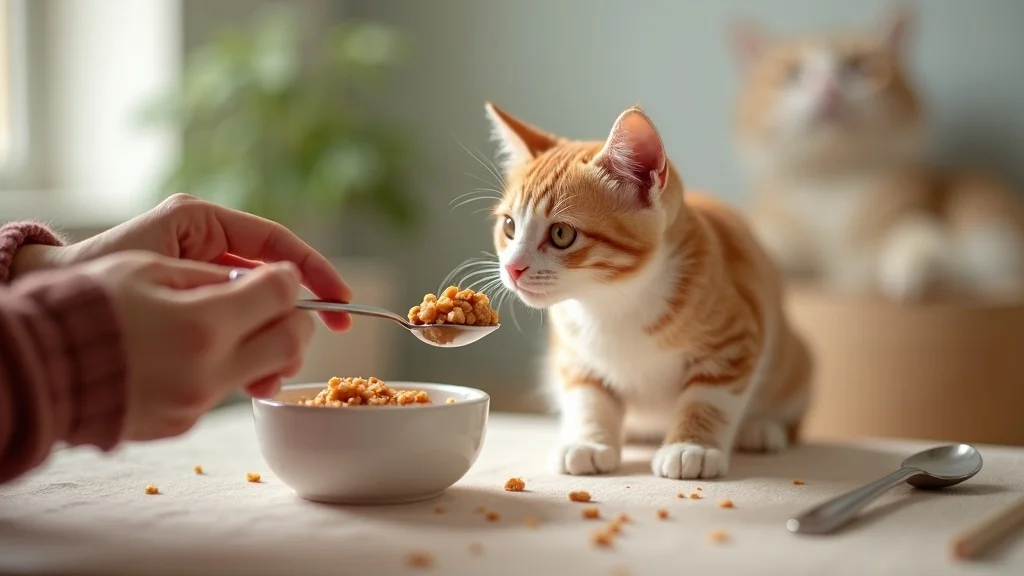
If these steps don’t spark improvement within a day, do not delay seeking professional help—persistent lack of appetite in cats can quickly develop into a serious health issue requiring medical intervention or, in some cases, feeding tube support.
When to See a Veterinarian for Cat’s Eating Disorder
- Cat hasn’t eaten for over 24–36 hours
- Rapid weight loss or persistent vomiting
- Signs of dehydration or weakness
Seek veterinary assessment right away if your cat has stopped eating for more than 24–36 hours, exhibits rapid weight loss, vomiting, diarrhea, or signs of weakness and dehydration. In these situations, the risk of developing hepatic lipidosis—a potentially fatal liver condition—is high, especially in overweight or middle-aged cats. A veterinarian will perform a physical exam and diagnostics to determine if a medical condition or a non-medical factor is responsible for your cat's eating disorder.
Watch: When Is Cat Anorexia an Emergency? Veterinary Advice – Your vet is your best resource for urgent pet health concerns.
Medical Condition Focus: How Kidney Disease, Dental Problems & More Affect Food Intake
Chronic illnesses are common triggers for a cat stopped eating. Here’s how some of the most frequent medical conditions impact your cat’s food intake and what warning signs to monitor.
Kidney Disease and Cat Not Eating
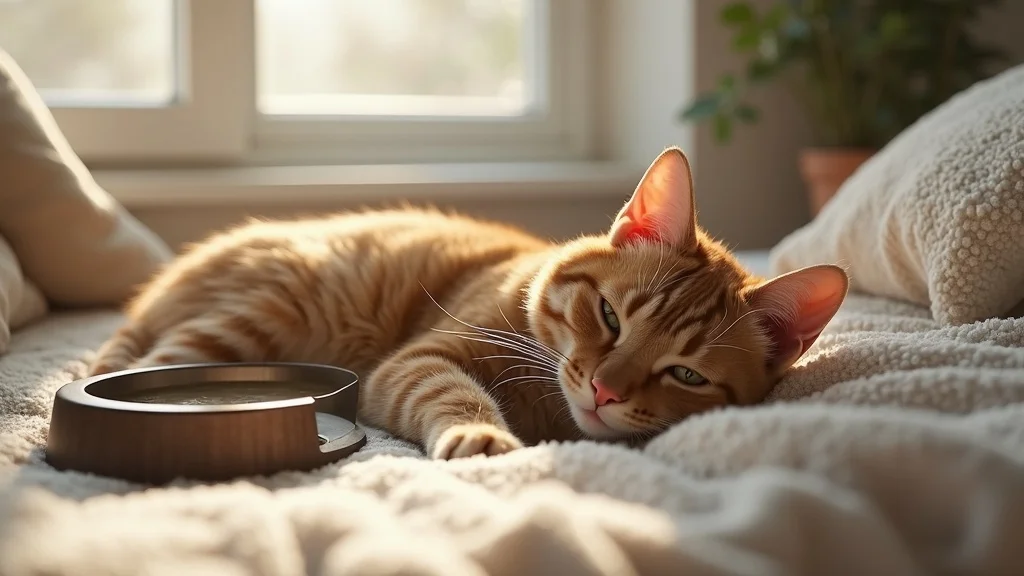
Kidney disease is one of the most common chronic health issues in older cats. As kidney function declines, toxins accumulate, leading to nausea, stomach upset, and ultimately, a decreased desire to eat. Cats with kidney disease may also drink more water, pee more frequently, and suffer from bad breath or oral ulcers. If left untreated, these symptoms can progress into severe malnutrition and hepatic lipidosis. Early diagnosis and veterinary care are critical for restoring feline health and improving your cat’s quality of life.
Dental Disease as a Cause of Eating Disorder
Cats suffering from dental disease, such as gingivitis, tooth abscesses, or fractured teeth, often show a marked reluctance to eat due to pain while chewing. You might notice drooling, pawing at the mouth, or preference for soft foods. Scheduled dental checkups, prompt treatment, and proper oral hygiene can prevent these issues and support ongoing pet health. Ignoring dental pain not only worsens the eating disorder but can also pave the way for life-threatening infections or organ damage.
Other Medical Conditions Impacting Feline Health
- Hyperthyroidism
- Liver disease
- Cancer
Other notable medical conditions include hyperthyroidism (which sometimes causes a paradoxical increase in appetite, but can later result in a drop), liver disease, and various types of cancer. Each affects food intake differently but can lead to anorexia, weight loss, and declining energy. Sometimes the signs of anorexia are the first clue that something serious is going on beneath the surface. Therefore, timely intervention ensures your cat receives the right care before these health problems progress.
Behavioral & Environmental Solutions: Getting Your Cat to Eat Again
When medical causes have been ruled out, the focus must shift to environmental and behavioral adjustments. Even minor tweaks to your cat’s feeding routine or environment can make a world of difference in reversing food aversion and restoring healthy food intake.
Optimizing the Environment to Improve Food Intake
- Keep feeding stations clean
- Avoid loud noises and stressors near feeding area
- Offer food in a comfortable, familiar location
Cats are famously fastidious, sometimes refusing food just because the bowl isn’t clean or the feeding spot feels stressful. Ensure that feeding stations are regularly washed and placed in quiet, familiar locations away from heavy traffic, other pets, or appliances. If your cat’s appetite is slow to rebound, minimize changes and provide gentle encouragement, allowing them to approach the food at their own pace. These strategies are essential for encouraging feline health and breaking the cycle of food aversion.
Best Practices to Encourage Cat to Eat
- Rotate flavors and brands gradually
- Use puzzle feeders
- Stick to a regular feeding schedule
Gradually introducing new cat foods by mixing them with favorites increases acceptance and reduces the risk of food aversion. Puzzle feeders can make mealtime fun and mentally stimulating, prompting your cat to engage with their food intake in a positive way. Finally, sticking to regular mealtimes helps reinforce healthy eating habits and reassures your cat that food will be available consistently.
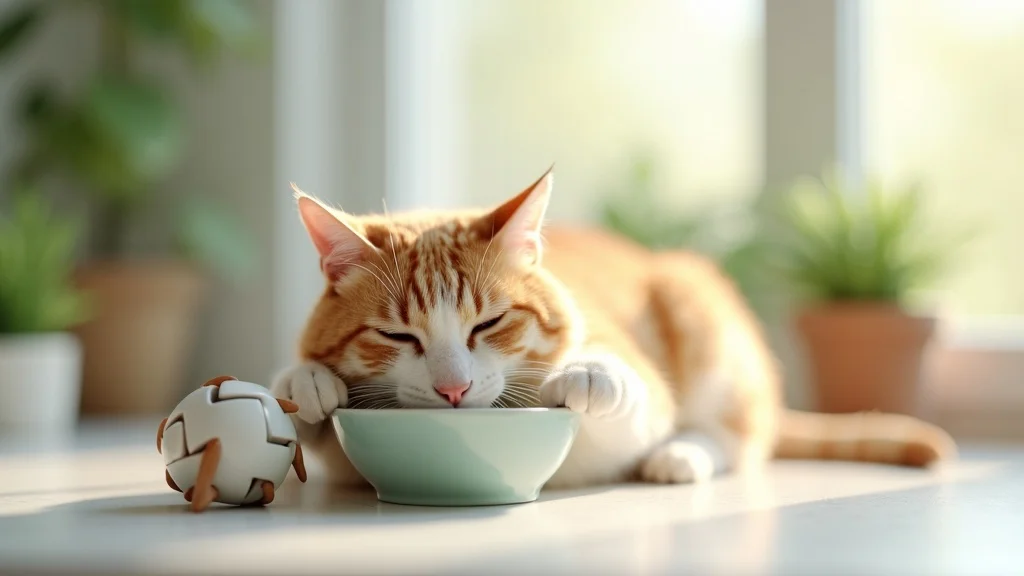
Video Feature: Behavioral Tricks to Encourage Your Cat to Eat – Watch expert demonstrations of positive feeding techniques.
People Also Ask: Why Is My Cat Not Eating or Anorexic
Why is my cat so skinny and won't eat?
Answer: A cat that is losing weight and avoiding food may be suffering from an underlying medical condition such as kidney disease, dental pain, gastrointestinal issues, or even cancer. Stress, changes in environment, and food preferences can also contribute. Veterinary attention is essential if your cat is both skinny and not eating.
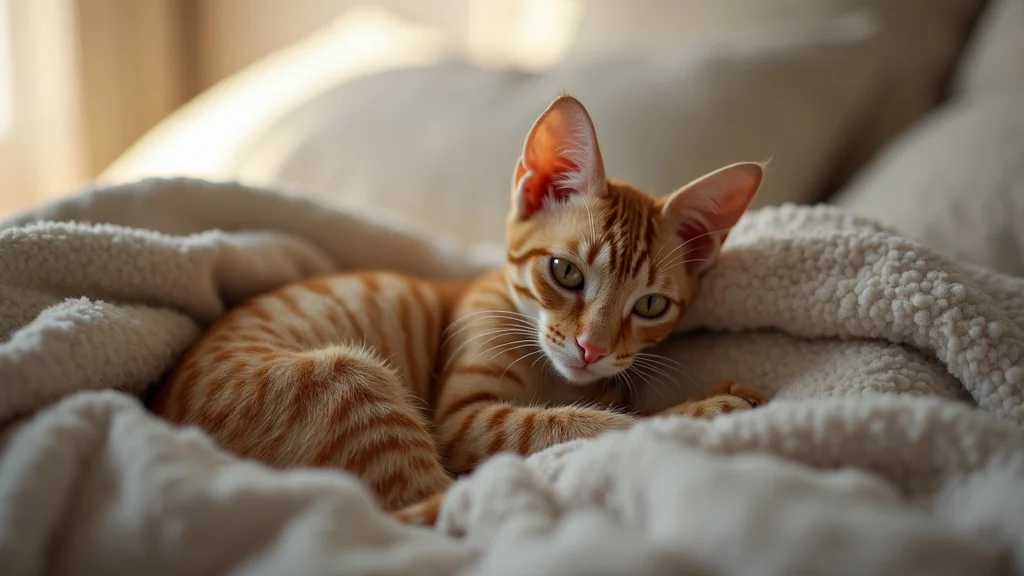
How long can a cat go without eating before it passes away?
Answer: Cats can typically survive up to two weeks without food but begin suffering liver damage (hepatic lipidosis) after just 48–72 hours of anorexia. Immediate intervention is vital if a cat stops eating to prevent life-threatening complications.
What causes anorexia in cats?
Answer: Cat anorexia can be triggered by medical conditions (like dental disease, kidney failure, or infections), stress, changes in surroundings, or issues with food (such as flavor, temperature, or freshness). Watch for associated symptoms and consult a veterinarian when in doubt.
How do you force feed an anorexic cat?
Answer: Force feeding should only be attempted with veterinary guidance. Soft diets can be syringed into the cat’s mouth gently if prescribed. However, long-term refusal to eat may require feeding tubes or advanced medical interventions, so timely professional help is crucial.
Frequently Asked Questions About Why Is My Cat Not Eating or Anorexic
- How can I stimulate my cat’s appetite naturally?
- Is it normal if my cat skips a meal?
- Could it be food allergies causing my cat’s eating disorder?
- Are indoor cats more prone to anorexia?
- When is a veterinary visit urgent for cat not eating?
Key Takeaways: Why Is My Cat Not Eating or Anorexic
- Promptly identify and address changes in your cat’s food intake.
- Anorexia in cats is often a sign of a serious medical condition.
- Behavioral and environmental adjustments can sometimes restore appetite.
- Immediate veterinary attention is crucial for persistent eating disorders.
Expert Advice: Supporting Your Cat’s Feline Health and Food Intake
"Never ignore a cat that suddenly stops eating. Early intervention ensures the best outcomes for feline health." – Dr. Elena Martinez, Feline Specialist
Conclusion: Solutions for Why Is My Cat Not Eating or Anorexic
- Remain vigilant to sudden changes in your cat’s appetite.
- Implement the above strategies for both medical and behavioral causes.
- Don’t wait: Consult a vet if your cat refuses food for more than a day.
Love pets as much as we do? Join our monthly newsletter for tail-wagging tips, adorable stories, and smart pet care hacks. 🐾 Subscribe now — it’s paws-itively free!
If you’re concerned about your cat’s loss of appetite, the article “6 Reasons Why Your Cat Is Not Eating and What To Do” from PetMD offers valuable insights into potential causes and solutions. (petmd.com) Additionally, “Cat Not Eating? 9 Reasons Why and How to Help” by Newsweek provides further information on this topic. (newsweek.com) These resources can help you understand the underlying issues and guide you in taking appropriate steps to address your cat’s eating habits.
 Add Row
Add Row  Add
Add 




Write A Comment